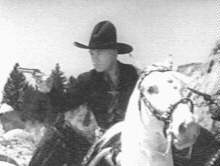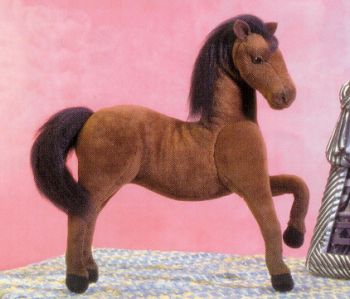|
|
Overcoming Riding Fears
by Faith Meredith
Anyone who has ridden for any length of time would be dishonest
if they told you they have never felt fear. If you have any
common sense at all, you should have a certain level of “healthy
fear” whenever you get on a new horse. Call it “respect” if you
prefer, but there is always an awareness that the 1000-pounds or
so of bone and muscle you are sitting on is, physically, more
powerful than you are.
Horses can jump sideways in the blink of an eye, rear, buck, or
reach speeds over 25 miles per hour in a matter of seconds. They
are also capable of using that physical power to perform
incredible athletic feats like jumping, dressage, cutting, or
reining. Our desire to become partners with our horses in those
athletic endeavors makes us willing to take the risk of being
thrown off or finding ourselves on a panicked runaway.
A bad experience, usually something that could not have been
avoided no matter what the rider did, can turn healthy respect to
fear. Once a rider has been physically hurt in an accident or even
just really frightened it can take a while to rebuild confidence.
The old rough-and-ready, cavalry-style philosophy promised that
if you just got right back on again, everything would be fine.
However, suppressing fear seldom works. Neither does it help to
tell someone to “just get over it.”
Fear is usually related to the rider’s skill level. The best way
to overcome riding fears is to work on developing a completely
independent seat. An independent seat gives the rider the
confidence the he or she has the ability to ride through just
about anything the horse might do. Riders also need to develop
habits that allow them to stay mentally and emotionally centered
in a rhythmic and relaxed way when their horse becomes excited or
frightened. One of the partners has to stay calm in order to
bring the other back to that state.
It is hard to get past your fear when you work by yourself.
Finding a competent instructor who acknowledges your confidence
crisis without either belittling it or catering to it is
important. You need someone who understands how to back up and
find the point where you are comfortable riding and how to help
you work forward again from that point in a logical progression
to regain your confidence.
Having the right horse or horses available can also be critical
when you are trying to rebuild confidence. People who are afraid
of riding often have good reason to be, they may have realized that
they are over mounted on their own horse. Trying to work through
fear on the same animal that caused your fears can be very
difficult. We are fortunate here at Meredith Manor to have the
luxury of 130 to 150 horses to choose among when our instructors
sit down to make weekly horse assignments for individual
students. When we get a fearful student, we can put them on
goldie oldie school horses that give them a lot of positive
reinforcement and gradually rebuild their confidence by moving
them onto horses that take greater skill.
Fear around horses is not limited to riding. Many people feel
intimidated when they have to catch, lead or groom an unruly,
ill-mannered horse. Even if they manage to dominate the horse
using a chain lead shank or other artificial means, they may
still have a queasy feeling because they know they are not really
in charge of the situation. Here, again, a good instructor should
be able to help a fearful student learn how to confidently and
safely work around and re-school a spoiled horse with bad ground
manners.
Hopalong Cassidy and Topper

Training methods aimed at making the trainer “dominant” work only
as long as nothing scarier or more dominant than the trainer is
in the horse’s immediate environment. Handling techniques that
depend on chain shanks or war bridles do not result in permanent
changes in the horse’s attitude or true confidence on the part of
his handler. We use a groundwork system we call “heeding” because
it teaches the students to pay attention to their horses at all
times and teaches the horse to pay attention to its handler at
all times. Through consistent handling with rhythm and relaxation
from the moment they enter a horse’s stall until they put him
away, they learn how to develop a rapport with their horses. The
goal is to make the horse feel like the trainer or rider is
always the safest place to be whenever exciting or unusual things
happen.
Learning how to approach and work with horses on the ground in a
rhythmic and relaxed way not only keeps the horses calm, but also
teaches the students how to relax and stay calm. Using rhythmic
breathing and rhythmic movements while they groom or lead their
horses becomes a habit they can carry into their riding. The
habit of staying rhythmic with their breathing, their seat, or
their reins when things start falling apart helps both rider and
horse relax and become calm again more readily.
Every rider must eventually face fear and overcome it. Fear is
not something to be ashamed of or to hide. When it happens to
you, find an instructor with the right attitude, the right
program of progressive skill training, and the right horses to
get you back on track again.
© 2001-2004 Faith Meredith
http://www.meredithmanor.com/
Plush Horses to Provide you with Hours of Enjoyment!

Horse Calendars you will find Delightfully Charming
|